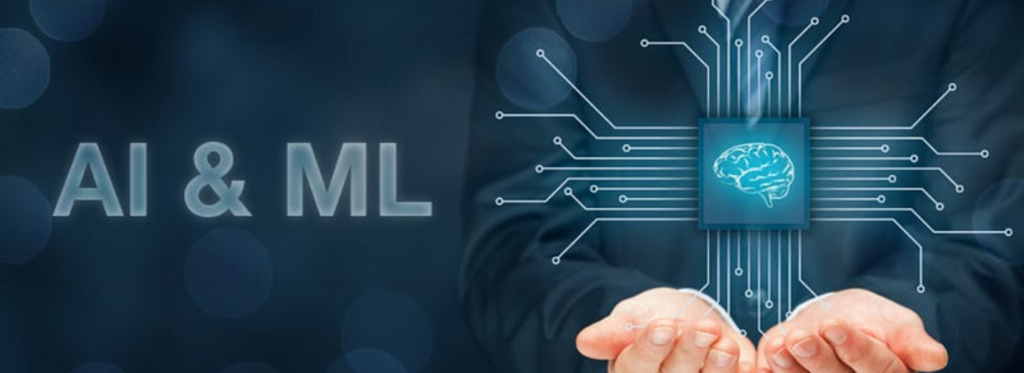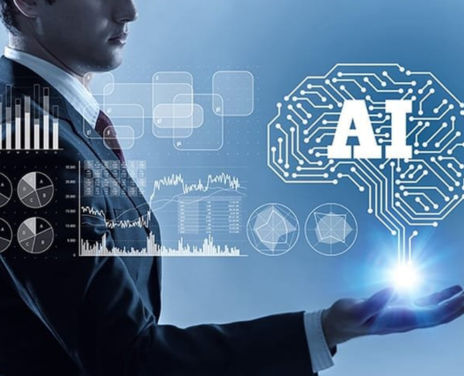The IT industry has always been the industry which sets new goals and explores new opportunities as well as follows new challenges. Smart technologies such as Artificial Intelligence (AI) and Machine Learning (ML) have become some of the most popular disruptive trends in the last decade. These IT solutions represent much more than simple improvements to existing processes; they help set records by revolutionising the industry through AI and ML. This is how these technologies are reshaping the game as follows.
1. Optimizing Decision-Making Measures via Data Analysis
The largest benefit of the IT industry due to the use of AI and ML is their capacity to handle raw and unstructured data and perform analysis on it in record time. Businesses and companies produce huge volumes of data on a daily basis and the ability to analyze it is essential for successful decision-making.
Superior to human analysts AI-powered analytics tools help to find patterns, trends and other useful information that usually may take months. For instance, when using predictive analytics based on the ML algorithms in an organization, business can predict the market trends, and the likely needs of the customers and potential threats as well. This helps IT planning teams work on strategies that are more proactive instead of being on the back foot, thus delivering more satisfactory solutions to a problem and increased performance.
2. Revolutionizing Automation
Automation has long been a term frequently used in IT industry, but with the emergence of AI and ML it reached new level. Simple clerical processes like record keeping, checking and analyzing data, and printing and compiling reports can be performed by automations saving time for more innovative work for people.
Rich and sophisticated automation with minimal human interference is made possible by the use of RPA complemented by AI. For instance, help desk teams in IT organizations apply natural language processing AI chatbots to field customer questions, identify simple technical problems and address them, or else transfer them to the right technical help if more complex. That not only saves operational expenses but also increases the speed of response and customers’ satisfaction.
3. Enhancing Cybersecurity

This is the reason why when the volume and intensive of attacks increases traditional methods are not enough in protecting an organization. AI and ML have been widely adopted in combating cybercrime, given how usefulness they are in that regard. Provider-anchored security systems that utilize artificial intelligence for network analysis, threats and breaches identification and prediction offer real-time security.
In our case, the use of ML algorithms works best for the detection of zero-day attacks and other unknown threats because of the ability to learn from the new forms of malware. In addition, AI improves the situation by automatically dealing with threats, so that the organization can respond instantly and lessen loss.
4. Tailoring the experience of the user
The IT industry becomes more and more concerned with the provision of relevant experiences to users in their roles as customers or as members of an organization’s workforce or value chain. AI and ML are at the center of this, as organizations are able to customize solutions and goods within the realms of customer predispositions.
For instance, recommendation engines which make use of ML algorithms take user information to provide a product, content or solution which may suit the user. In it services, user interface is where one gets to see his customized control panel and work flow that can be efficiently customized to enhance productivity thus engaging the user more. This level of customization is fast becoming he norm and AI is enabling it to happen at scale.
5. Accelerating Software Development
AI and ML are also interfering in SW development’s touch-loop cycle. Every stage beginning from code generation and debugging up to the stages of testing and deployment are now more efficient, faster, and have lower chances for error occurrences thanks to intelligent tools.
These self-driving technologies in programming include providing code AI through structures offered by GitHub Copilot, recommending most efficient algorithms, and even predicting the best approach that will give few or no bugs. Moreover, it takes into consideration previous project timelines in order to estimate respective new project more effectively and manage projects appropriately.
6. Building Innovation through New Technologies
AI and ML techniques are not simply improving the maturity of existing IT processes; they are effectively archaic and forming the foundation for new applications. For example:
- Edge Computing: Machine learning algorithms enhance data management at the edge to enhance performance in every IoT device.
- Quantum Computing: Competent in complex problem solving In problems involving quantum mechanics, AI optimizes research & development of applications such as cryptography and material science.
- Natural Language Processing (NLP): AI/NLP tools are becoming increasingly popular and bringing humans closer to how one interacts with another human being.
7. Optimizing IT Infrastructure
Applying management on the infrastructure of IT is not an easy and simple process and requires many resources. Much of this is made possible by AI and ML that allow for predictive – rather than preventive – maintenance, real-time resource management, and monitoring. For instance, future hardware breakdowns can be depicted by AI systems to help Information Technology groups to prevent incidents in advance.
Cloud service providers are also using Artificial Intelligence to manage resources and provide demand for computing in a very optimized manner. This not only saves cost for operations but also reduces the negative effect on the environment due to utilization of more power.
8. Ensuring Work from Home and Remote Working
Employees, especially during the COVID-19 pandemic, now work remotely, so it requires trustworthy and highly-performing IT infrastructure. Business transformation requires improved collaboration tool, data security and network performance and these is where AI and Machine learning come in and assist.
For instance, appearance and performance of video conferencing can be enhanced by an AI-based platform that learns the current state of the network and uses it in order to improve it. Likewise, they improve virtual workspace tools in areas such as automation, notification filtering, and user interfaces.
Challenges and Ethical Considerations
To accelerate their adoption in the IT industry, there are downsides of using AI and ML as discussed below. These questions: data protection, algorithms’ downstream effects, and job replacement, must be resolved properly. Organizations need to follow ethical AI approaches and have to predict accurate results, avoid bias, and calculate fairness.
Further, the AI technologies are so ever-evolving that one needs to upgrade the skills frequently for the IT professional. It is about time the different organizations put their money where their mouth is by implementing training and development initiatives to enable the employees to effectively work in the environment that is characterized by artificial intelligence.
Conclusion
AI and ML are not longer just interesting topics in the IT world—they are necessary. Starting with decision-making support and cybersecurity arguments, they progress to influencing innovation and individualization of services. And as businesses have continued to discover and capitalize on the potential of AI and ML, the growth opportunities are almost infinite.
However, it is a set of new values that can be achieved only with the use and development of an effective and completely balanced strategy that will combine the aspects of continuous innovations with the efforts to resolve the ethical and practical questions. In this way, the IT industry could guarantee that AI and ML are not only improving the technologies that are developed, but also the future for humanity.


